
The Lancashire Mining Museum is situated on the site of Astley Green Colliery on Higher Green Ln, Astley, Manchester, M29 7JB. It is cared for by the Red Rose Steam Society Ltd and it houses the only surviving colliery winding house and headgear in Lancashire.
The sinking of two shafts by the Clifton & Kersley* Co Ltd commenced in May 1908 and the colliery became active in 1912. The shafts were first sunk through 33 yards of peat and water-logged ground connected with Chat Moss. Because of the ground problem the shafts were sunk using the ‘drop-shaft’ method which was done with the help of hydraulic rams forcing down cast-iron drums. The shafts were lined to a depth of about 135 yards using this method. The principal mines worked were the Worsley Four Foot Mine, Crombouke Mine and Trencherbone Mine associated with the West Manchester Coalfield. By the late 1960s production targets were progressively becoming difficult to meet and the colliery’s usefulness was nearly over. As a result, Astley Green Colliery closed on the 3 Apr 1970.
The Winding House and Headgear are a Scheduled Monument, List entry No. 1017061. The monument is now on the Heritage at Risk Register because the headgear, especially, is deteriorating and the winding house has localised issues such as spalling brickwork.
The Clifton & Kersley Coal Co and its successors
In the 18th century and first half of the 19th century collieries in the area were worked by the Fletcher family.
These were taken over by the Clifton & Kersley Coal Co which was founded by Edward and Alfred Pilkington in 1867.
The London Gazette records that on the 31 Dec 1884 the four business partners of the company were Edward Pilkington, Alfred Pilkington, Joseph Evans and Thomas Drayton Grimké.
In 1885 this was incorporated as the Clifton & Kersley Coal Co Ltd, Company No. 21449.
In 1929 the company joined a consortium to form Manchester Collieries Ltd, Company No. 237654. Following nationalisation of the coal industry on the 1 Jan 1947
the collieries owned by Manchester Collieries Ltd came under the control of the National Coal Board and in Nov 1954 the decision was made to voluntarily wind up the company.
 |
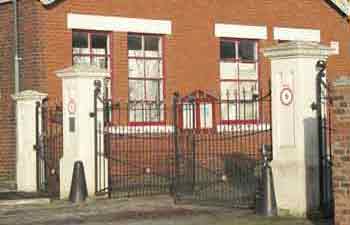 |
Museum Entrance. The lodge is on the left and the colliery rescue station is on the right. |
Lodge. Formerly the colliery offices, the building is now a museum of small exhibits, including a replica lamp room and replica underground roadway. |
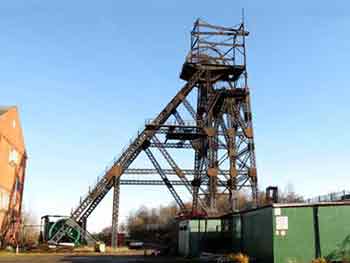 |
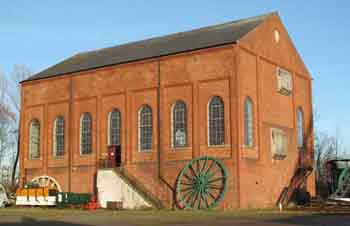 |
Headgear of No. 1 Shaft. It is of steel lattice construction, with rivetted plates at the joints, and it stands over 100 feet high. It was built in 1912 by Head Wrightson & Co of Stockton-on-Tees. |
No. 1 Winding House. The winding house is of brick construction with a slate roof, seven bays long by three bays wide. The two windows in the centre bay of the end elevation are where the winding ropes formerly entered the building. |
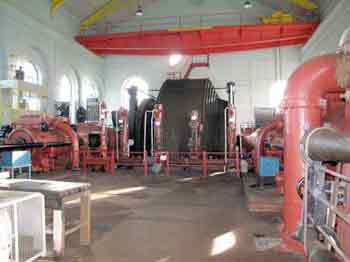 |
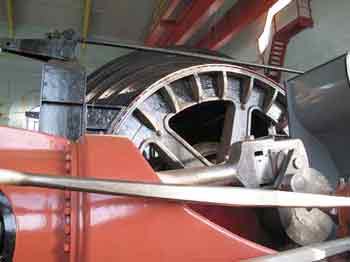 |
No. 1 Winding Engine. This view shows one side of the engine with the high pressure cylinder on the right and the low pressure cylinder on the left. Exhaust steam from the high pressure cylinder passed into a calorifier under the floor where it was used to heat water. The steam then passed into the low pressure cylinder and from there it passed into a condenser where it was liquefied before passing back to the boilers. Steam was raised in coal-fired Lancashire boilers. |
No. 1 Winding Drum. Detail of the winding drum with a crank and connecting rod in the foreground. |
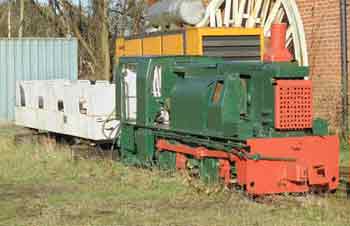 |
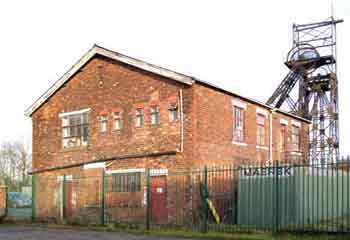 |
Mine Locomotive and Car. Used to transport miners to and from the coal face. The locomotive would also be used to haul coal tubs. |
Colliery Rescue Station. Nowadays this building is used as the museum offices and workshop. |